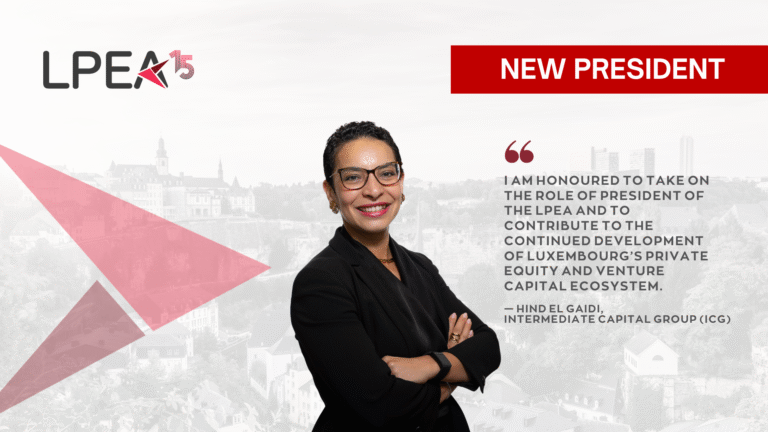The Luxembourg S.A.S.: the Swiss Army knife in the toolbox
by Jérémie Schaeffer (Partner, Head of Corporate Implementation), Gaël Toutain (Partner, Corporate Implementation) and Suzana Guzu Mercea (Counsel), Atoz
“This innovative measure opens up new ways of structuring and planning the control over a group”
The S.A.S. (“société par actions simplifiée”, simplified public company), was recently introduced in the Luxembourg corporate law by the reform to the modified law of 10 August 1915 on commercial companies (the Law). Compared to other legal forms, the Luxembourg S.A.S. increases flexibility at many levels and benefits from an enhanced contractual freedom both with respect to the arrangement of shareholders’ rights and to the organisation of its management. Inspired by the immediate and undisputed success of its French counterpart, the Luxembourg S.A.S. will soon prove its appeal to a wide audience of entrepreneurs already familiar with this type of vehicle. In this article, we illustrate through practical examples, the great flexibility that the S.A.S. has to offer through practical examples. Its features make it a versatile, useful, multi-purpose vehicle, akin to the Swiss Army knife.
The core legal regime applicable to the S.A.S. is based on the rules governing the public limited liability company (société anonyme or S.A.):
-
- it has a legal personality, distinct from that of its founders and shareholders, who, in turn, have a limited liability which is limited to the amount of their capital contributions;
-
- it may have a single shareholder or an unlimited number of shareholders;
-
- it has a centralised management exercised by a president (irrespective of the number of shareholders), whose powers can be shared with one or more directors or delegated to one or more agents;
-
- its capital, which must be of at least 30,000 euros, is made up of transferable shares.
The Law, however, expressly rules out the application of some of the S.A. provisions, notably those concerning the corporate governance of the company. These provisions are either briefly touched upon by the section dedicated to the S.A.S. or entirely left to be determined by the bylaws.
Corporate governance
Management
The shareholders of the S.A.S. are free to establish the conditions in which the company is managed. In any event, and regardless of the number of its shareholders, the S.A.S. must be managed by a president, who can be an individual or a legal person. Third parties are able to enforce the president’s acts even when they exceed the corporate object, provided that the third party is unaware that the act exceeds the corporate object. The president may be appointed either by the S.A.S.’s direct shareholders or, for the first time in Luxembourg corporate law, by non-shareholders.
This innovative measure opens up new ways of structuring and planning the control over a group. The S.A.S. could become a vehicle which would be appropriate for wealth transfer. For instance, the founder of a successful business would be keen to preserve the group’s integrity and to ensure its sustainable development after his/her retirement. In this scenario, it is likely that for as long as he/she has the legal and physical capacity, the founder, as president of the S.A.S., will maintain the widest powers to determine the group’s strategy and activities. However, when no longer able to carry out his/her functions, , the powers would be conferred upon a new president, appointed by a “wise men” committee or by a temporary shareholder entity, all set up according to the former founder’s wishes.
Representation
The Law allows for the president’s management and representation powers to be exercised by one or more directors. Both the president and the director are appointed pursuant to the terms of the bylaws (be it by the direct shareholders, third parties, or, as far as the director is concerned, by the president). The articles of association must also determine the conditions in which the director can exercise the prerogatives granted to the president, i.e. all of them, or only partly, with autonomy or only upon collective agreement reached with the president.
This could represent an opportunity for the joint ventures. As such, the S.A.S. could be structured with a joint management made up of a president and a director with equal powers, but each representing and being accountable to the partner who appointed them.
Management bodies
The Law is silent on the functioning of the management bodies, leaving the specific rules to be determined by the bylaws. Therefore, the shareholders are free to determine how the president and director(s) are appointed or removed. They must also determine the conditions under which management decisions are taken (in meetings, by written resolutions, or upon consultation with an advisory committee) and under which conditions their powers can be exercised (independently, jointly or according to instructions received).
Delegation
An even greater amount of freedom is given with respect to the delegation of powers or the creation of executive or ad-hoc committees. In the absence of legal provisions, and implicit in the legal restrictions concerning acts that can be delegated, the bylaws must set out detailed rules concerning delegation. Advisory or executive committees can have a say in the company’s business. Specialised committees can be established in order to assist the management in running a project, while crucial decisions can be made by reserved unanimous management vote. Similarly, where the group’s employees are granted access to the capital of the S.A.S., besides the limited number of decisions they would be entitled to make as shareholders, they can either be consulted by the president collectively in an advisory committee or they can be directly and/or gradually involved in the authorisation of strategic business decisions.
Oversight of the management
The control over the S.A.S.’s management is performed through the audit of its annual accounts by a statutory auditor, the approval of the annual accounts by the shareholders as well as the disclosure of the conflicts of interest concerning the president or the director(s). Given that the Law provides that the president has the last word in case of a conflict of interest between the director(s) and the company, care must be given to the situations in which the president and the directors are meant to be on equal footing (e.g. in joint ventures). In such cases, this decision could be left in the hands of the shareholders.
Common practice has developed other means of management oversight, equally effective. The bylaws must determine, in detail, the scope of powers conferred upon supervisory bodies, the way in which members are consulted and the conditions in which they are to deliberate.
For instance, a supervisory board could satisfy an investor’s need to scrutinise the management of the company it has invested in, while the founder of the business continues to enjoy control over the business activity by retaining his/ her position and extensive management powers as president of the S.A.S.
Collective decisions
Save for certain legally reserved matters, it is for the bylaws to determine which decisions must be approved collectively by shareholders and, consequently, which decisions can be taken by other corporate bodies. The only decisions reserved to the shareholders’ meeting are those relating to capital increase, amortization of capital or capital reduction, mergers, demergers, dissolutions, transformations into a company of another form, appointments of auditors, approval of annual accounts and annual distribution of profits.
The rest of the matters can be decided upon freely, including by the president, if allowed by the bylaws and under the conditions set forth in them. It could be conceived for instance to empower the president of an S.A.S., to amend the bylaws in order to expand the company’s corporate object and to encompass new activities. The president could also determine the rules governing the appointment of directors or of executive management boards or committees. At the other end of the spectrum, the shareholders could impose unanimity for certain central decisions, particularly in joint ventures scenarios or where the control of and over the shareholders lies at the very core of the venture. Moreover, certain decisions can be taken solely by a category of shareholders, while other decisions are left in the hands of the other shareholders.
The Law leaves the organisation of the shareholders’ collective decisions (i.e. the mode of their consultation, the rules applicable in terms of quorum and majority), including of those collective decisions which are, by Law, reserved to the shareholders, to the bylaws. In addition, the reformed Law does not apply the requirement for the public limited companies of meeting the quorum and majority conditions in each category of shares, where multiple classes of shares exist and the general meeting called upon is susceptible to affecting their rights to the SAS. Thanks to these S.A.S. features, shareholders can shift the balance of power according to their needs.
Shareholder(s) rights and relations
The shareholders enjoy a great amount of freedom and flexibility also with respect to the allocation of rights attached to their shares.
Voting rights
The 2016 reform of the Law brought a number of changes which have considerably enhanced structuring opportunities in Luxembourg. The abolition of the rule “1 share=1 vote”, as well as some of the restrictions to non-voting preferred shares and the possibility to create shares with different nominal values are instances of such innovative measures.
The S.A.S. bylaws need to precisely and indisputably identify the voting rights attached to the shares. They also need to determine if the voting right (or the multiple voting rights) is tied to the share or to the shareholder. The shares could be stripped of their voting rights, provided they are retrieved in the circumstances provided by the Law. The S.A.S. could also issue shares giving their holder veto rights in certain collective decisions.
The newly introduced provisions on shareholder voting conventions, the suspension of voting rights or the voluntary waiver of voting rights bring many opportunities to tailor the vehicle to the shareholders’ specific needs in virtually every possible situation.
Economic rights
In the absence of S.A.S.-specific provisions in the Law, the general principles applicable to S.A. concerning the distribution of profits to the shareholders become applicable. Therefore, limitations to the distribution of profits consist of unconscionable clauses/one-sided clauses (clauses léonines) as well as the distributable amount of annual profits. The tailor-made bylaws of a joint venture entity could therefore go as far as to generate mutually agreed inequality between the shareholders in respect to their economic rights, as far as equity contributions and distribution waterfall are concerned.
The S.A.S. can issue voting or non-voting preferential shares (giving the right to the distribution of a priority dividend and the right to a higher portion of the liquidation proceeds).
The economic rights attached to the S.A.S. shares could also be modeled progressively in time and be vested based on factors such as a “leaver event” or performance. Such would be the case of a management vehicle in an LBO structure, whereby the specific allocation of profits among the senior management members could be determined according to complex vesting rules and confined to good leaver/bad leaver scenarios. Similarly, the beneficiaries of an employee equity plan could be granted dividend-bearing non-voting or voting shares in the S.A.S. as a reward and incentive for their contribution to the company’s success. Moreover, employees’ voting and economic rights could be generated and multiplied according to seniority or performance.
Share transfer
The S.A.S. bylaws must determine the conditions for the transfer of shares. Any transfer made in violation of said provisions will be null and void. Inalienability clauses (for as long as the transfer prohibition is limited in time and in accordance with the corporate interest of the company), prior approval clauses, exclusion clauses, withdrawal clauses are only a few examples of the type of provisions affecting the transfer of shares that could be inserted in the S.A.S. bylaws. Their effectiveness can be further ensured by requiring a unanimous vote for any change to the bylaws affecting these clauses.
A bespoke vehicle
The S.A.S. can be tailored to the needs of a broad base of shareholders and investors. It can also be tailored to the requirements of highly complex corporate governance and financial structures. However, with freedom comes responsibility. It is often said that the S.A.S. bylaws are a blank page. Nevertheless, great care must be given to the writing on that page and in particular to filling in the gaps. The S.A.S. risks legal uncertainty or undesirable consequences if its bylaws do not contain provisions that were legally dis-applied from the S.A. or they remain silent on matters that could have been excluded (such as the bondholders’ right to attend the general meetings).
Like a Swiss Army knife in the toolbox, the S.A.S can be adapted to many different functions or activities. The examples highlighted above are only a high-level display of the plethora/multitude of uses of the S.A.S.
For further information, please contact Jérémie Schaeffer at jeremie.schaeffer@atoz.lu, Gaël Toutain at gael.toutain@atoz.lu and Suzana Guzu Mercea at suzana.guzu@atoz.lu.








